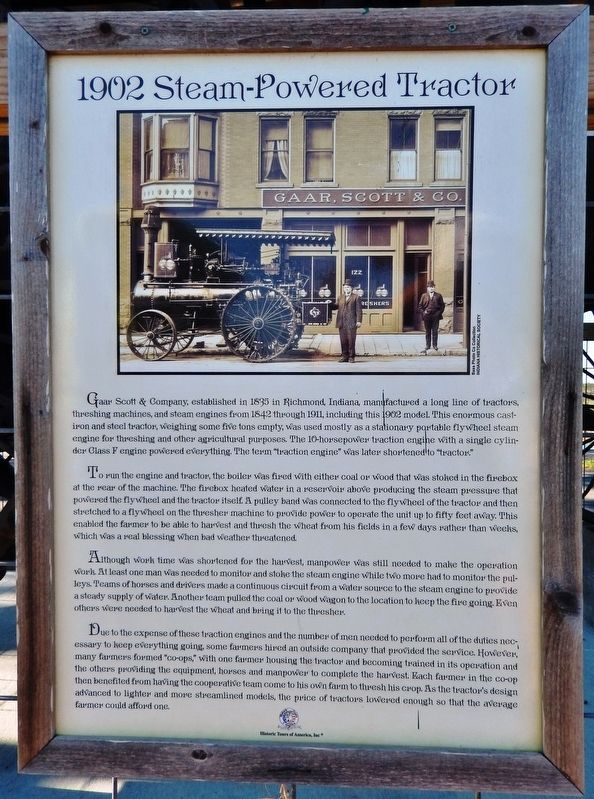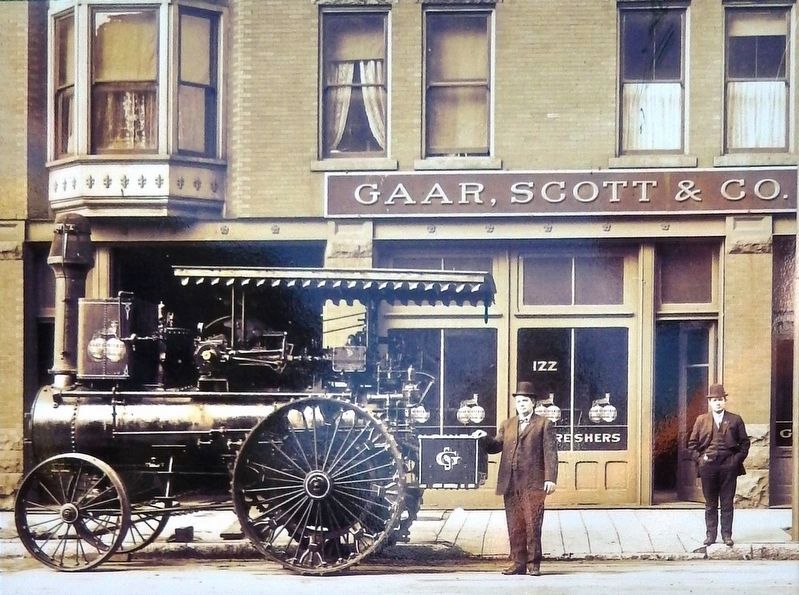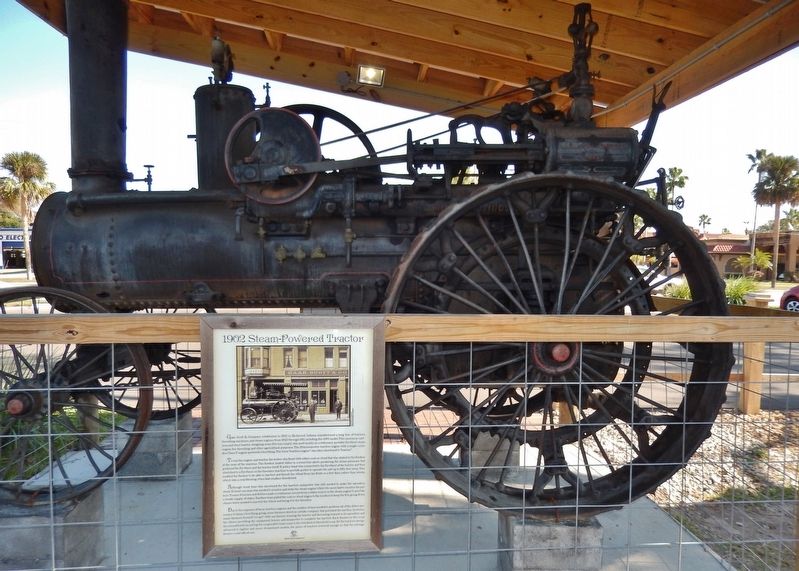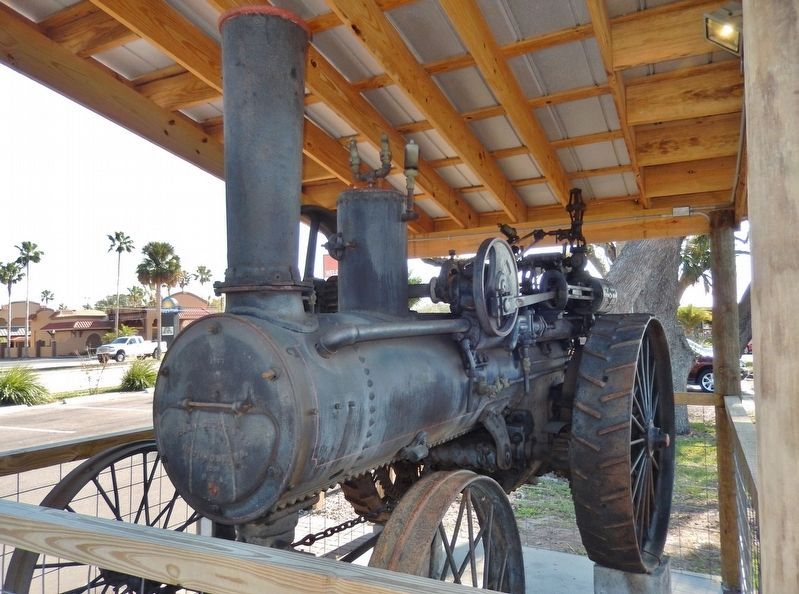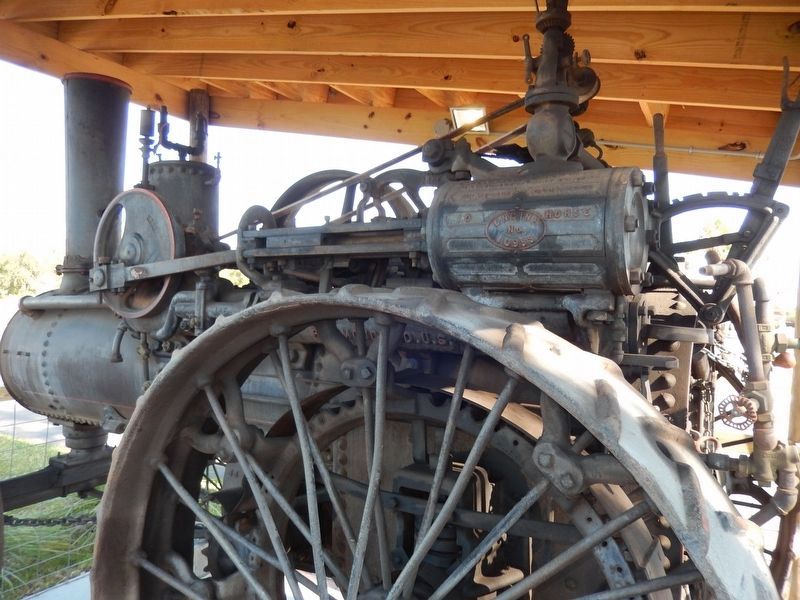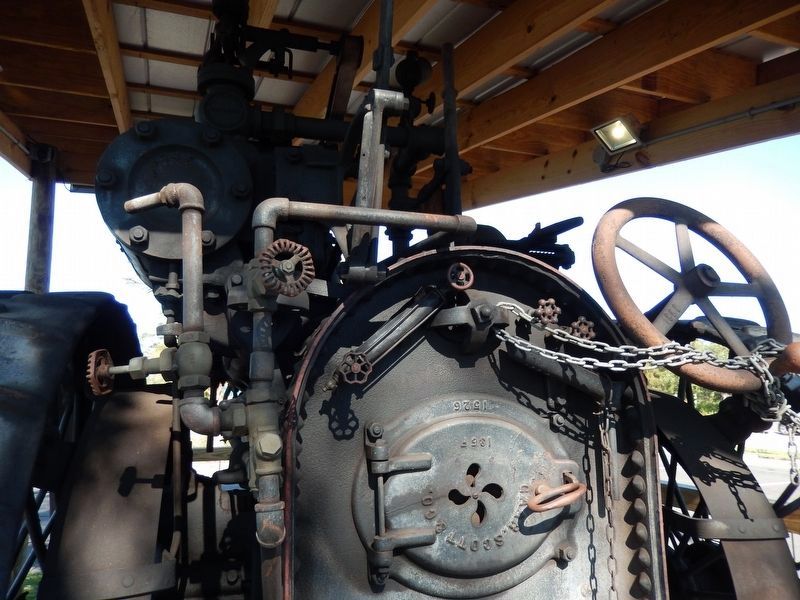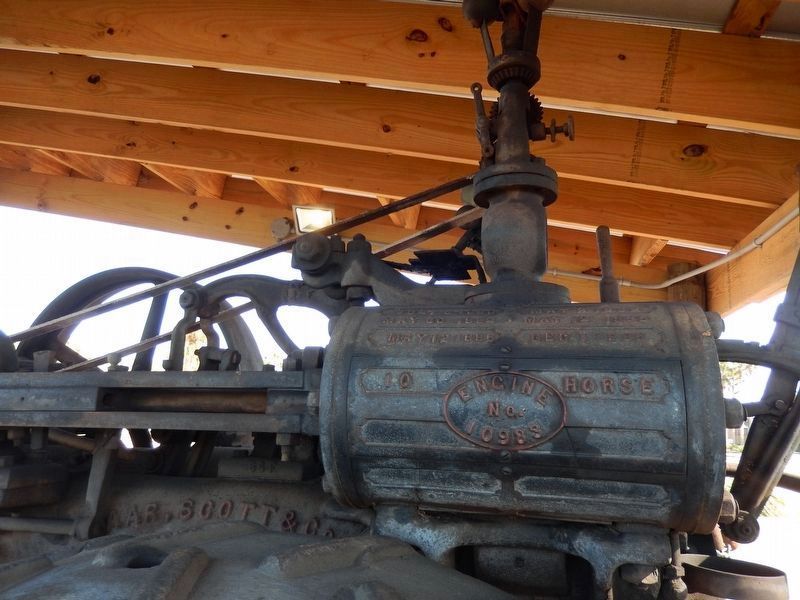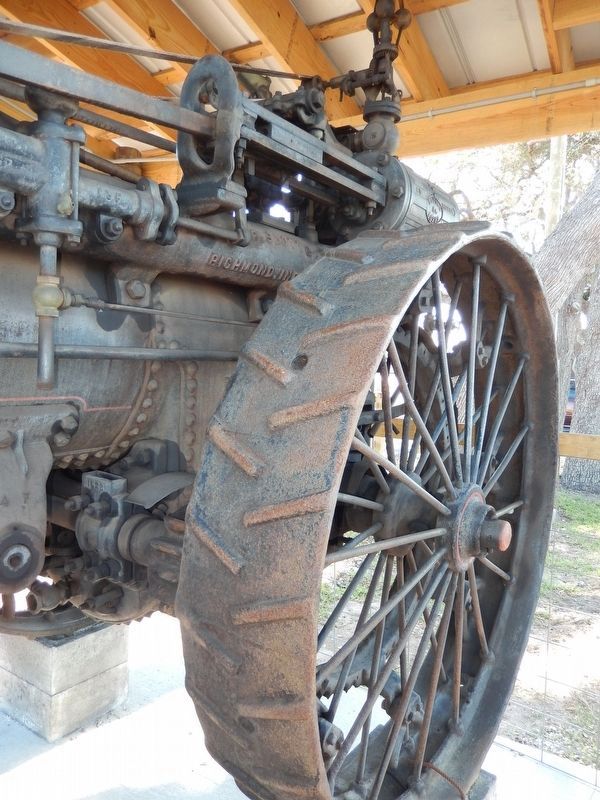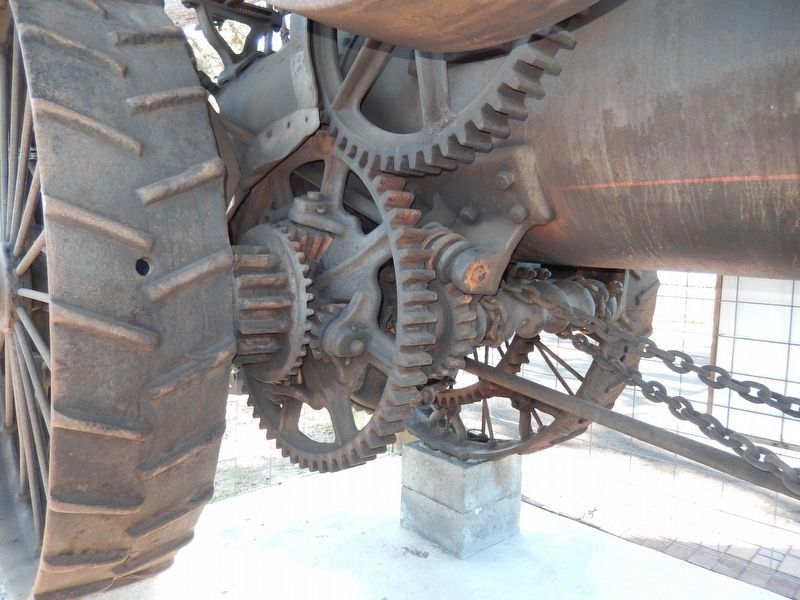Historic District in St. Augustine in St. Johns County, Florida — The American South (South Atlantic)
1902 Steam-Powered Tractor
To run the engine and tractor, the boiler was fired with either coal or wood that was stoked in the firebox at the rear of the machine. The firebox heated water in a reservoir above producing the steam pressure that powered the flywheel and the tractor itself. A pulley band was connected to the flywheel of the tractor and then stretched to a flywheel on the thresher machine to provide power to operate the unit up to fifty feet away. This enabled the farmer to be able to harvest and thresh the wheat from his fields in a few days rather than weeks, which was a real blessing when bad weather threatened.
Although work time was shortened for the harvest, manpower was still needed to make the operation work. Al least one man was needed to monitor and stoke the steam engine while two more had to monitor the pulleys. Teams of horses and drivers made a continuous circuit from a water source to the steam engine to provide a steady supply of water. Another team pulled the coal or wood wagon to the location to keep the fire going. Even others were needed to harvest the wheat and bring it to the thresher.
Due to the expense of these traction engines and the number of men needed to perform all of the duties necessary to keep everything going, some farmers hired an outside company that provided the service. However, many farmers formed “co-ops,” with one farmer housing the tractor and becoming trained in its operation and the others providing the equipment, horses and manpower to complete the harvest. Each farmer in the co-op then benefited from having the cooperative team come to his own farm to thresh his crop. As the tractor's design advanced to lighter and more streamlined models, the price of tractors lowered enough so that the average farmer could afford one.
Erected by Historic Tours of America, Inc.
Topics. This historical marker is listed in these topic lists: Agriculture • Industry & Commerce. A significant historical year for this entry is 1902.
Location. 29° 54.277′ N, 81° 19.283′ W. Marker is in St. Augustine, Florida, in St. Johns County. It is in the Historic District. Marker is on North Ponce De Leon Boulevard (U.S. 1) north of Old Mission Avenue, on the left when traveling north. Marker is located in front of the large kiosk and steam tractor exhibit in the "Ghost Tours" parking lot on the west side of the highway. Touch for map. Marker is at or near this postal address: 1305 North Ponce De Leon Boulevard, Saint Augustine FL 32084, United States of America. Touch for directions.
Other nearby markers. At least 8 other markers
are within walking distance of this marker. Water Power! (within shouting distance of this marker); 33 Bernard Street (approx. 0.2 miles away); Mission Nombre de Dios (approx. ¼ mile away); The Old Senator (approx. ¼ mile away); Spreading the Wealth Since 1900 (approx. ¼ mile away); Chain Gangs (approx. ¼ mile away); Jail on Wheels (approx. ¼ mile away); The 1910 Mary Peck House (approx. ¼ mile away). Touch for a list and map of all markers in St. Augustine.
More about this marker. Marker is a weatherized and framed poster, mounted at eye-level on the front side of the steam tractor exhibit.
Also see . . .
1. A short history of Gaar, Scott and Co. In 1870, A. Gaar & Co. incorporated as Gaar, Scott & Co. Abram Gaar, who was active in the company until his death in 1894, was succeeded by his brother, John Milton Gaar, who had grown up with the threshing machine business and had developed the plant as the industry developed. William C. Scott was a Virginian whose parents had moved to Richmond in 1827. Scott was the businessman of the firm, and John M. Gaar devoted his time to the mechanical end. Gaar, Scott & Co. began manufacturing portable steam engines in the mid-1850s, with steam traction engines joining the line about 1884. (Submitted on November 10, 2018, by Cosmos Mariner of Cape Canaveral, Florida.)
2. Gaar, Scott & Co. This company was founded by Jonas Gaar and his sons, Abram and John Milton Gaar, and Jonas' son-in-law, William G. Scott. The company was active 1842 through 1911. They specialized in farm machinery, such as threshing machines, grain separators, and steam engines, but they also made circular sawmills. In 1911 they were taken over by the Advance Rumely Co. (Submitted on November 10, 2018, by Cosmos Mariner of Cape Canaveral, Florida.)
3. Steam tractors. Steam tractors were the forerunner to the modern diesel engine tractor. The first steam tractors were built by blacksmiths as an adaption of the portable steam engine, used to drive stationary machinery, and towed about by a team of horses. Early steam tractors were used to drive stationary machinery, like threshers and rolling mills. (Submitted on November 10, 2018, by Cosmos Mariner of Cape Canaveral, Florida.)
Credits. This page was last revised on January 2, 2019. It was originally submitted on November 10, 2018, by Cosmos Mariner of Cape Canaveral, Florida. This page has been viewed 933 times since then and 45 times this year. Photos: 1, 2, 3, 4, 5, 6. submitted on November 10, 2018, by Cosmos Mariner of Cape Canaveral, Florida. 7, 8, 9. submitted on December 27, 2018, by Cosmos Mariner of Cape Canaveral, Florida. • Andrew Ruppenstein was the editor who published this page.
